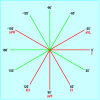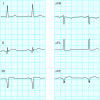ABC of clinical electrocardiography.Introduction. I-Leads, rate, rhythm, and cardiac axis
- PMID: 11850377
- PMCID: PMC1122339
- DOI: 10.1136/bmj.324.7334.415
ABC of clinical electrocardiography.Introduction. I-Leads, rate, rhythm, and cardiac axis
Figures










Publication types
MeSH terms
LinkOut - more resources
Full Text Sources
Other Literature Sources
Medical
